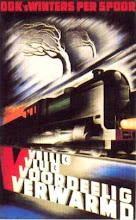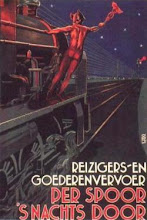This weekend we had a few hours to saw, shave and sand a rough roof mould for the missing Paya 987 roof. I used old pine as it is hard enough to be rigid and soft enough to work it into the required shape. Furthermore, we have a full shed of pieces of old pine wood. The plan is to sand the mould in an even better shape and then to use it as soldering mould and make a new roof from either new tin plate or brass plate. Well anyway, a start has been made and I am quiet happy with this rough mould.
Last Saturday, I went to Peperkamp to get a brass sheet of K&S (10 x 4 x 0.01 inch) for a reasonable price. First, I cut and folded a paper roof to measure all the distances on the roof mould. Then I started to cut the metal sheet. To get the four right angles in the brass the most difficult part. But my vice, hammer and fat iron ruler were perfect for the job. Now I just have to bend the more gentle curves in the roof and solder it together.
Last evening I started to shape the rounded corners of the Paya roof, by making incisions with a pair of scirrors, hamering the shape in the roof and soldering the lot to form a roof with nicely curved lines. Well, there is still a lot to do: filling the holes, sanding, grinding, polishing! Afterwards the curves will get smooth finish by soldering a thin strip on the bottom rim of the roof curves.
The roof replacement is now largely formed; all the major shapes are formed. It just has to be made beautiful still.
Tuesday, January 13, 2015
Thursday, January 01, 2015
Former glory
A few days ago, I stumbled upon a set of Paya coaches in dilapidated condition. Three 987 series coaches and two 1372 series coaches, all pre civil war (prior to 1936).
I always liked Paya. I vaguely remember seeing a Paya Santa Fe (black-green livery) in a toy shop window in Deventer city late 1980's, but by the time I got the money sorted, it had been sold. Occasionally, Paya is offered locally via auction sites, but the demanded prices are ridiculous, so I normally do not bother. So, these coaches were just right for me. In such poor condition that nobody else was interested and thus excellent for me.
The blue Paya Coche Cama 987 is in the best condition, although the wheels are cracked and some buffers are missing. I reckon that it would be best to fit modern Merkur wheels and axles under it. These are easily accessible and would make it run much better.
The green Paya Coche Butacas 987 is missing wheels and axles. But this can be fixed. The window styles are clearly different.
The red Paya Coche Salon 987 is the worst condition. Although it still has two sets of wheels and axles in one bogie, these wheels are cracked and chipped off. So a wheel and axles replacement is required for these. But even more important a roof is missing. So, I will spend some time on Spanish web sites looking for a roof replacement, otherwise I will have to remake it myself from brass plate. Although nice to do, it is laborious.
The two 1372 coaches are in even worse condition. Although the paint work of the sides is still acceptable, the base plates are warped. So, that will be future's projects. Anyway, this is my first close encounter with Paya toy trains and the prejudices I read on the web are right.
1. it is beautiful detailed, with opening doors, nice decorations, etc.
2. the cast zamac parts are affected by zinc pest,
3. they can only be run on wider curves, since the bogies can only turn a few degrees before they hit the metal trusses on the base plate.
4. well made, many of the connections are screw-nut instead of slot-tab. Furthermore, there are many small well-made details to enjoy such as foot steps, door grabs, bogie design, etc.
I always liked Paya. I vaguely remember seeing a Paya Santa Fe (black-green livery) in a toy shop window in Deventer city late 1980's, but by the time I got the money sorted, it had been sold. Occasionally, Paya is offered locally via auction sites, but the demanded prices are ridiculous, so I normally do not bother. So, these coaches were just right for me. In such poor condition that nobody else was interested and thus excellent for me.
 |
| Paya Coche Cama 987 |
 |
| Paya Coche Butacas 987 |
 |
| Paya Coche Salon 987 |
The two 1372 coaches are in even worse condition. Although the paint work of the sides is still acceptable, the base plates are warped. So, that will be future's projects. Anyway, this is my first close encounter with Paya toy trains and the prejudices I read on the web are right.
1. it is beautiful detailed, with opening doors, nice decorations, etc.
2. the cast zamac parts are affected by zinc pest,
3. they can only be run on wider curves, since the bogies can only turn a few degrees before they hit the metal trusses on the base plate.
4. well made, many of the connections are screw-nut instead of slot-tab. Furthermore, there are many small well-made details to enjoy such as foot steps, door grabs, bogie design, etc.
Subscribe to:
Comments (Atom)


.jpg)
.jpg)
.jpg)







